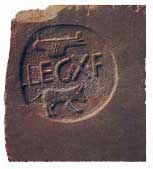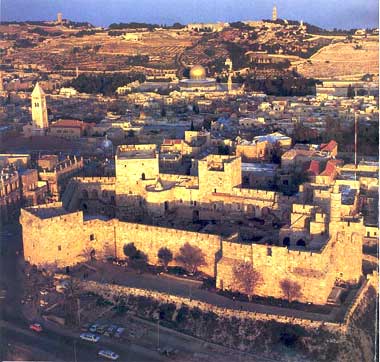Editor, H. S. (2002;2002). BAR 23:06 (Nov/Dec 1997). Biblical Archaeology Society.
Roman Jerusalem Searching for Roman Jerusalem
By Hillel Geva

|
Zev Radovan
The meager Roman remains discovered in the Old City of Jerusalem include stamped roof tiles and bricks bearing the initials LXF , short for LegiooXoFretensis, the Tenth Roman Legion, which participated in the siege against Jerusalem. The tile shown here also depicts the legion's emblems–a wild boar and a warship. Thousands of the tiles and bricks have been uncovered–only enough, however, to roof a few medium-sized buildings.
|

Richard Nowitz
Gazing east over the colorful architectural collage that makes up Jerusalem's Old City today, it is difficult to imagine the bleak vista–broken only by burnt houses and discarded stones–that would have confronted a visitor to the city after the Roman destruction in 70 C.E.
Scholars have long argued that after the Roman army conquered the city, it expelled the Jews and quickly established tight control, building a walled camp where David's Citadel and the Armenian Quarter lie today (inside the thick walls in the foreground). But archaeologists probing for the army's remains are finding that the Roman camp was much more spread out and probably unfortified. The Romans so devastated the Jews that they had no need to protect themselves from a counterattack.
The Romans destroyed Jerusalem at the end of the summer of 70 C.E. Under the command of the Roman general Titus, they burned the city and dismantled the Temple, thus ending the First Jewish Revolt (66–70 C.E.)–the so-called Great Jewish Revolt.
The Romans were not content simply to defeat the Jews. They pursued a policy of deliberate devastation, eradicating not only Jerusalem's central religious institution but the city's fortifications, public buildings and large residential quarters. Those Jews who managed to survive the long siege were later massacred by Roman soldiers or, in some cases, led into captivity and sold as slaves.
next page >
page 1:14
 
|
Biblical Archaeology Review
This article is part of the Biblical Archaeology Review Archive CD-ROM. Click here to learn more.
|
|